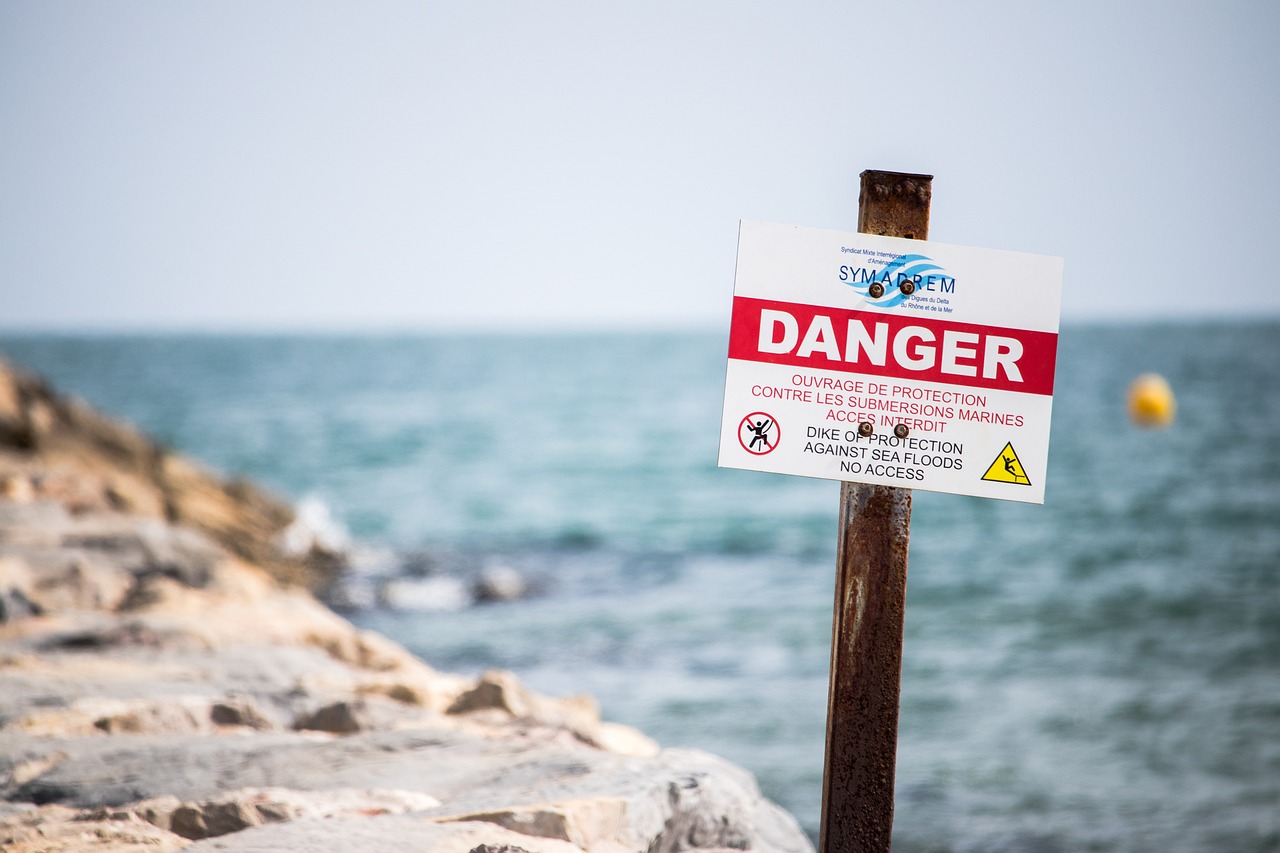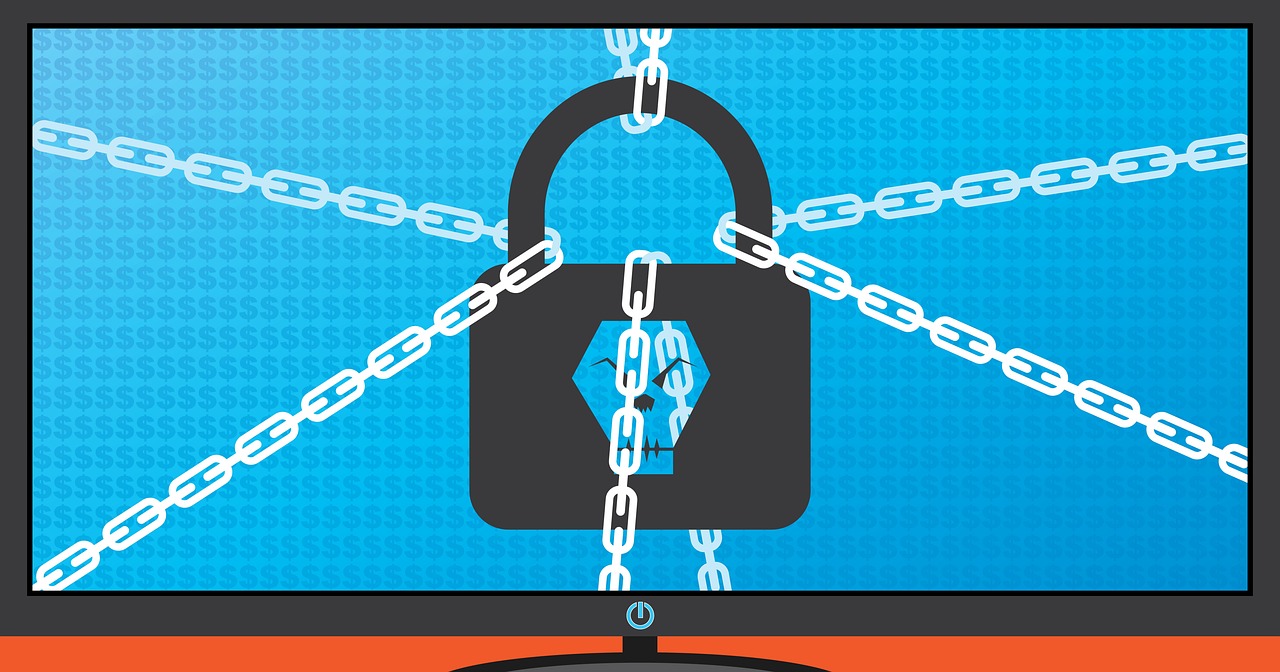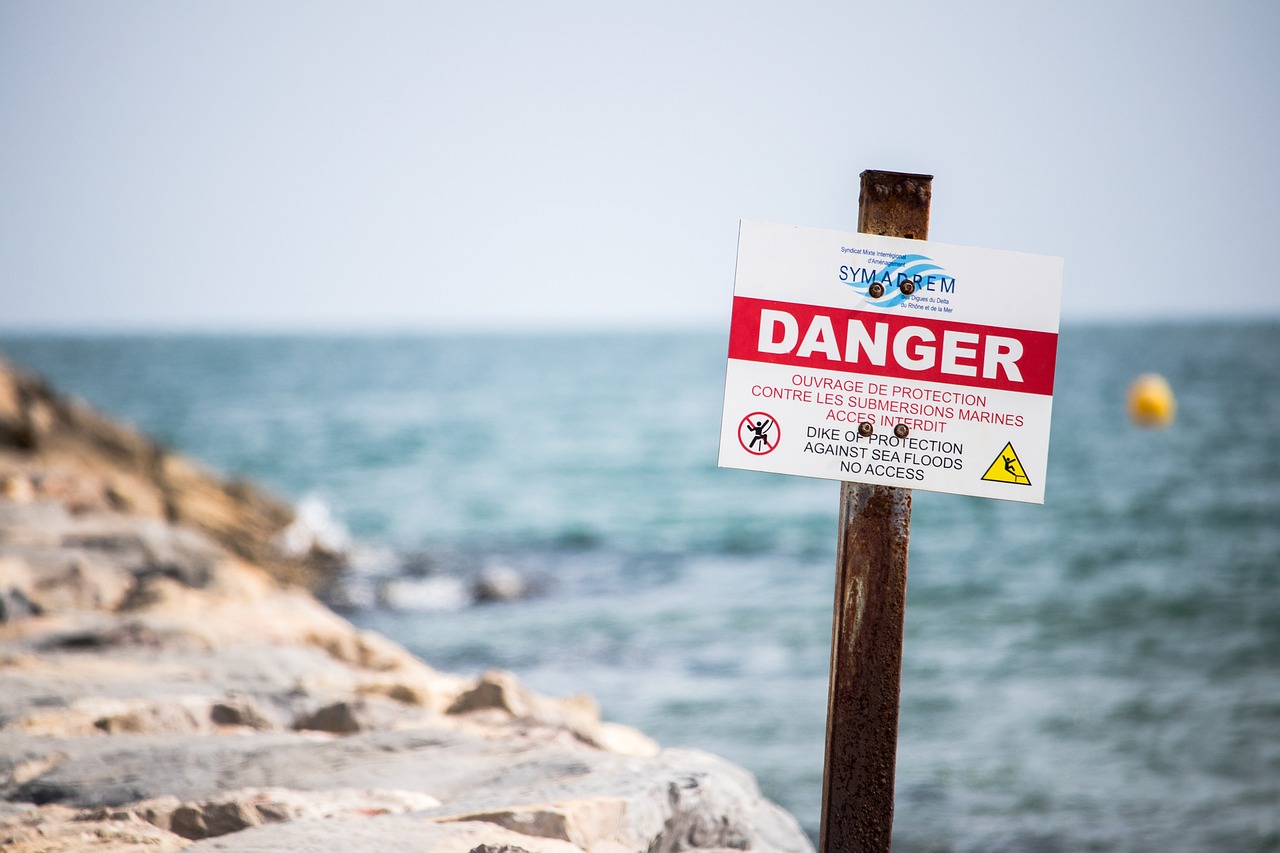Designing Safety Protocols: The Importance of Human Behavior
In today's fast-paced world, where safety is paramount, understanding the intricacies of human behavior is crucial for developing effective safety protocols. It’s not just about having rules in place; it’s about how those rules are perceived, accepted, and followed by individuals. Imagine a workplace where everyone adheres to safety measures not out of obligation, but because they genuinely believe in their importance. That’s the power of human behavior in safety protocol design. By diving into the psychological and social factors that influence decision-making, organizations can create a culture where safety is a shared value, not just a compliance requirement.
Understanding how human behavior impacts safety protocols is essential. Our actions are often guided by a complex interplay of psychological factors, social influences, and environmental cues. For instance, consider a construction site where workers are required to wear helmets. If they view this requirement as a mere formality, they may be less likely to comply. However, if they understand the potential consequences of not wearing a helmet—like severe head injuries—their behavior may change dramatically. Tailoring safety approaches to align with human psychology can significantly enhance adherence to safety protocols.
Compliance with safety protocols doesn’t happen in a vacuum; it’s influenced by various psychological factors. Understanding these can help organizations design better protocols that are more likely to be followed. For example, motivation, perception, and cognitive biases all play a role in how individuals respond to safety measures. By addressing these factors, organizations can create a more robust safety culture, ensuring that protocols are not only established but embraced.
Motivation is a driving force behind safety behavior. It can be both intrinsic and extrinsic, influencing how individuals approach safety protocols. Intrinsic motivation refers to the internal drive to engage in safe practices because one values safety. On the other hand, extrinsic motivation involves external rewards or consequences that encourage compliance. Understanding the balance between these two types of motivation can help organizations design protocols that resonate with their workforce. For instance, a worker may follow safety rules because they believe in their importance (intrinsic) or because they want to avoid penalties (extrinsic).
Exploring intrinsic motivation reveals how personal values and beliefs drive individuals to prioritize safety. When employees feel a personal connection to safety, they are more likely to engage in safe practices consistently. Organizations can cultivate this mindset by fostering an environment where safety is discussed openly and valued at all levels. Initiatives such as safety workshops, open forums for discussion, and sharing real-life stories of safety impacts can enhance this intrinsic motivation.
Extrinsic rewards can significantly influence safety behavior. Recognizing employees for their adherence to safety protocols can create a positive feedback loop that encourages continued compliance. For example, implementing a rewards program that acknowledges safe behavior can motivate employees to prioritize safety in their daily routines. This approach not only boosts compliance but also contributes to an overall culture of safety. Organizations should consider various forms of recognition, such as:
- Monetary bonuses for accident-free periods
- Public acknowledgment in company meetings
- Certificates of achievement for safety milestones
Cognitive biases can lead to poor safety decisions, often resulting from a distorted perception of risk. For example, the optimism bias leads individuals to believe that they are less likely to experience negative outcomes than others. This can result in complacency towards safety protocols. Identifying and addressing common cognitive biases in the workplace is essential for improving safety decision-making. Training programs that educate employees on these biases can help mitigate their impact, leading to better adherence to safety protocols.
Effective safety training is integral to promoting safe behavior. Training should not be a one-time event but an ongoing process that evolves with the organization. By considering human behavior in training design, organizations can ensure that employees not only understand safety protocols but are also motivated to follow them. This involves creating engaging and relevant training experiences that resonate with the workforce.
Engaging training methods enhance retention and application of safety protocols. Traditional training sessions may not capture attention or encourage active participation. Instead, incorporating interactive techniques such as simulations, role-playing, and hands-on activities can make a significant difference. These methods allow employees to experience real-life scenarios in a controlled environment, making the learning process more impactful.
Continuous feedback is vital for refining safety protocols. Organizations should actively seek input from employees regarding their experiences with safety measures. This feedback loop not only helps identify areas for improvement but also empowers employees by making them feel heard and valued. Regularly updating training materials and safety protocols based on employee feedback can lead to a more dynamic and effective safety culture.
- Why is human behavior important in safety protocols?
Human behavior influences how individuals perceive and adhere to safety measures. Understanding this can help organizations design protocols that are more likely to be followed. - What are intrinsic and extrinsic motivators?
Intrinsic motivators come from within, driven by personal values and beliefs, while extrinsic motivators are external rewards or consequences that encourage compliance. - How can cognitive biases affect safety decisions?
Cognitive biases can distort risk perception, leading individuals to underestimate dangers and neglect safety protocols. - What are effective training methods for safety?
Engaging training methods such as simulations, role-playing, and hands-on activities enhance retention and application of safety protocols.

The Role of Human Behavior in Safety
Understanding how human behavior impacts safety protocols is essential for creating effective safety measures in any environment. It's fascinating to realize that the decisions we make in critical situations are often influenced by a myriad of psychological factors, rather than just the rules laid out in a safety manual. Think about it: when faced with a potential hazard, do we always follow the protocol to the letter? Or do emotions, perceptions, and even biases come into play? This section dives deep into the intricate relationship between human behavior and safety, highlighting the necessity for tailored approaches that consider these psychological nuances.
At the core of safety is the individual, and how they perceive risk can dramatically shape their actions. For instance, an employee who feels invulnerable may disregard safety gear, believing that accidents won't happen to them. This is where understanding the psychology behind safety compliance becomes crucial. By recognizing the factors that drive behavior, organizations can craft protocols that resonate with their workforce on a deeper level. It’s not merely about enforcing rules; it’s about fostering an environment where safety is seen as a shared value.
Moreover, the social dynamics within a workplace can either enhance or undermine safety efforts. When team members feel supported and valued, they are more likely to engage in safe practices. Conversely, a toxic atmosphere may lead to negligence. Therefore, it’s imperative to create a culture that prioritizes safety through open communication and trust. By encouraging employees to voice their concerns and experiences, organizations can gain valuable insights into the human aspects of safety protocols.
In summary, the role of human behavior in safety cannot be overstated. It is not just about compliance; it is about understanding the psychological and social factors that influence decision-making. By acknowledging these elements, organizations can design safety protocols that are not only effective but also embraced by their workforce. This holistic approach to safety is what ultimately leads to a safer, more productive environment.

Psychological Factors Affecting Safety Compliance
When it comes to safety compliance, it’s not just about the rules and regulations; it's also about the intricate tapestry of human psychology that weaves through every decision we make. Understanding the psychological factors that influence how individuals respond to safety protocols is crucial for developing effective strategies. Consider this: why do some people follow safety measures to the letter while others seem to ignore them completely? The answer often lies in a complex interplay of motivation, perception, and cognitive biases.
First off, let’s talk about motivation. It’s like the fuel that drives behavior. People are motivated by various factors, and these can be broadly categorized into intrinsic and extrinsic motivators. Intrinsic motivation stems from within; it’s the personal satisfaction or sense of duty that compels someone to adhere to safety protocols because they genuinely believe in their importance. For example, an employee who values their own safety and that of their colleagues will naturally prioritize following safety measures. On the other hand, extrinsic motivation involves external rewards, such as bonuses or recognition for maintaining a safe workplace. This can be incredibly effective in encouraging compliance, especially in environments where safety practices may not be second nature.
Next, we have perception, which plays a pivotal role in how individuals assess risks and make decisions. People often have a skewed perception of risk due to various factors, including their past experiences and the information available to them. For instance, if someone has never experienced an accident, they might underestimate the importance of wearing personal protective equipment (PPE). This leads us to the concept of cognitive biases—those pesky mental shortcuts that can cloud judgment. Common biases, such as the optimism bias, may cause individuals to believe that accidents are less likely to happen to them, which can significantly hinder compliance with safety protocols.
To illustrate these psychological factors further, let’s take a look at a simple table that summarizes the key aspects:
| Psychological Factor | Description | Impact on Safety Compliance |
|---|---|---|
| Intrinsic Motivation | Personal values and beliefs driving safety behavior. | Increases adherence to safety protocols. |
| Extrinsic Motivation | External rewards such as bonuses or recognition. | Encourages compliance but may not sustain long-term behavior. |
| Risk Perception | How individuals assess the likelihood of hazards. | Can lead to underestimating risks and ignoring safety measures. |
| Cognitive Biases | Mental shortcuts affecting decision-making. | Can result in poor safety decisions and non-compliance. |
In summary, understanding these psychological factors is not just an academic exercise; it’s a practical necessity for anyone involved in safety management. By recognizing the motivations behind behaviors and addressing cognitive biases, organizations can tailor their safety protocols to better resonate with their employees. This leads to a more robust safety culture, where compliance is not merely enforced but embraced. When employees feel genuinely motivated to follow safety measures, the workplace becomes a safer environment for everyone.
- What are intrinsic and extrinsic motivators? Intrinsic motivators come from within an individual, such as personal values and beliefs, while extrinsic motivators are external rewards, like bonuses or recognition.
- How do cognitive biases affect safety compliance? Cognitive biases can lead individuals to underestimate risks and make poor safety decisions, ultimately impacting compliance with safety protocols.
- Why is understanding human behavior important in safety protocols? Understanding human behavior helps organizations design safety measures that resonate with employees, leading to better compliance and a stronger safety culture.

Motivation and Safety Behavior
When it comes to safety protocols, motivation is the driving force that can either propel individuals toward compliance or push them away from it. Imagine a scenario where workers are faced with the choice of adhering to safety measures or cutting corners to save time. What influences their decision? That’s where understanding motivation becomes crucial. In the realm of safety behavior, we can categorize motivation into two primary types: intrinsic and extrinsic.
Intrinsic motivation refers to the internal drive that compels individuals to act based on personal values, beliefs, and a genuine desire to ensure safety. For instance, a worker who believes in the importance of protecting their own health and the well-being of their coworkers is more likely to follow safety protocols diligently. Organizations can foster this kind of motivation by creating a culture that emphasizes safety as a core value. This can be achieved through:
- Open communication about safety practices and their importance.
- Encouraging employees to share personal experiences related to safety.
- Providing opportunities for employees to participate in safety committees or initiatives.
On the other hand, extrinsic motivation involves external rewards or incentives that encourage individuals to comply with safety protocols. This can include recognition programs, bonuses for accident-free periods, or even simple verbal praise from management. Research has shown that when employees feel appreciated for their adherence to safety measures, they are more likely to continue those behaviors. However, it’s essential to strike a balance; relying solely on extrinsic rewards can lead to a superficial commitment to safety.
To illustrate the impact of motivation on safety behavior, consider the following table that outlines how different motivational strategies can influence compliance:
| Motivation Type | Strategy | Impact on Safety Behavior |
|---|---|---|
| Intrinsic | Fostering a safety-oriented culture | Increased personal accountability and commitment to safety |
| Extrinsic | Implementing recognition programs | Enhanced compliance through tangible rewards |
Ultimately, understanding the nuances of motivation allows organizations to design safety protocols that resonate with their employees. By integrating both intrinsic and extrinsic motivational strategies, companies can create a comprehensive approach to safety that not only encourages compliance but also instills a genuine commitment to maintaining a safe work environment. So, the next time you ponder why someone might choose to follow or ignore safety guidelines, remember that motivation is often the key that unlocks the door to safer behaviors.
Q: How can organizations increase intrinsic motivation for safety?
A: Organizations can increase intrinsic motivation by fostering a culture of safety, encouraging open communication, and aligning safety practices with employees' personal values.
Q: What are some effective extrinsic rewards for promoting safety behavior?
A: Effective extrinsic rewards can include bonuses for accident-free performance, recognition programs, and tangible rewards such as gift cards or additional time off.
Q: How can motivation impact overall workplace safety?
A: Motivation directly influences compliance with safety protocols. When employees are motivated, they are more likely to adhere to safety measures, reducing the risk of accidents and injuries.

Intrinsic Motivation in Safety Practices
When we think about safety in the workplace, it’s easy to get caught up in the rules, regulations, and protocols that govern our actions. However, one of the most powerful drivers of safe behavior is often overlooked: intrinsic motivation. This refers to the personal values and beliefs that compel individuals to prioritize safety, not just because they have to, but because they genuinely want to. Imagine a firefighter who rushes into a burning building, not for accolades or bonuses, but because they believe in saving lives—this is intrinsic motivation at its finest.
Understanding intrinsic motivation is crucial for organizations aiming to cultivate a culture of safety. When employees feel a personal commitment to safety, they are more likely to engage in safe practices, report hazards, and encourage their peers to do the same. This kind of motivation can stem from various sources, such as personal experiences, company values, or even a sense of community within the workplace. It’s about tapping into what really matters to individuals on a deeper level.
To foster this intrinsic motivation, organizations can adopt several strategies:
- Encourage Ownership: Allowing employees to take ownership of safety practices can significantly enhance their intrinsic motivation. When individuals feel responsible for their own safety and that of their colleagues, they are more likely to engage actively in safety protocols.
- Align with Personal Values: Organizations should strive to align safety practices with the personal values of their employees. For instance, if teamwork is a core value, emphasizing how safety practices protect everyone can resonate deeply.
- Provide Meaningful Work: When employees see their work as meaningful and understand how their actions contribute to a larger goal, they are more likely to adhere to safety protocols. Highlighting the impact of safe practices on community well-being can enhance this sense of purpose.
Moreover, leaders play a pivotal role in nurturing intrinsic motivation. By demonstrating a genuine commitment to safety and engaging in open dialogues about its importance, they can inspire employees to internalize these values. Recognition of individual efforts, not just through awards but through genuine appreciation, can also reinforce this motivation. When employees feel valued for their commitment to safety, it strengthens their resolve to maintain safe practices.
In essence, cultivating intrinsic motivation in safety practices is about creating an environment where employees feel empowered and connected to their work. It’s about moving beyond compliance and fostering a culture where safety is seen as a shared responsibility and a core value. By doing so, organizations not only enhance safety outcomes but also create a more engaged and motivated workforce.
- What is intrinsic motivation in safety practices?
Intrinsic motivation refers to the internal drive that encourages individuals to prioritize safety based on personal values and beliefs rather than external rewards. - How can organizations foster intrinsic motivation?
Organizations can foster intrinsic motivation by encouraging ownership of safety practices, aligning safety with personal values, and providing meaningful work experiences. - Why is intrinsic motivation important for safety?
Intrinsic motivation is crucial because it leads to a deeper commitment to safety practices, resulting in better compliance and a stronger safety culture.

Extrinsic Rewards and Compliance
When it comes to ensuring compliance with safety protocols, extrinsic rewards can be a game changer. These rewards, which come from external sources, can significantly influence individuals' behavior and decision-making processes. Think of it this way: if you know there's a reward waiting for you at the finish line, you're more likely to run that extra mile. In the context of safety, these rewards can take many forms, from bonuses and promotions to public recognition and praise. The key is to align these incentives with safety goals, making it clear that adhering to safety protocols is not just a duty but a path to personal and professional gain.
One effective strategy for integrating extrinsic rewards into safety compliance is through recognition programs. These programs can spotlight employees who consistently follow safety measures, creating a culture where safety is celebrated. For instance, companies might implement a 'Safety Star of the Month' program, where employees are nominated based on their commitment to safety practices. This not only boosts morale but also encourages others to follow suit, knowing that their efforts will be acknowledged.
Moreover, the design of these reward systems is crucial. They should be specific, measurable, attainable, relevant, and time-bound (SMART). For example, instead of a vague 'good job' reward, a company could offer a $100 bonus for teams that achieve zero accidents over a quarter. This clarity helps employees understand exactly what behaviors are being rewarded, making it easier for them to aim for compliance.
However, it’s essential to balance extrinsic rewards with intrinsic motivation. If employees perceive rewards as the only reason to comply with safety protocols, their commitment may wane once the rewards are removed. Thus, combining extrinsic incentives with efforts to foster a genuine safety culture is vital. Organizations should strive to create an environment where safety is not only rewarded but also valued and ingrained in the workplace ethos.
To illustrate the effectiveness of extrinsic rewards, consider the following table that outlines various reward types and their potential impact on safety compliance:
| Reward Type | Description | Potential Impact |
|---|---|---|
| Monetary Bonuses | Financial incentives for meeting safety goals. | Increased motivation to adhere to protocols. |
| Public Recognition | Highlighting individuals or teams in company communications. | Enhanced morale and peer motivation. |
| Gift Cards | Small rewards for consistent safety practices. | Encouragement of continuous compliance. |
| Safety Awards | Annual awards for outstanding safety performance. | Long-term commitment to safety culture. |
In conclusion, while extrinsic rewards are not a silver bullet for safety compliance, they can play a significant role in shaping behavior when used thoughtfully. By creating a structured reward system that recognizes and incentivizes safe practices, organizations can foster a culture where safety is prioritized and valued. Ultimately, the goal is to create an environment where employees feel motivated to comply with safety protocols, not just for the rewards, but because they genuinely believe in the importance of safety.
- What are extrinsic rewards? Extrinsic rewards are external incentives provided to motivate individuals to perform certain behaviors, such as bonuses or recognition.
- How do extrinsic rewards affect safety compliance? They can enhance motivation and encourage adherence to safety protocols by providing tangible benefits for safe behavior.
- Can extrinsic rewards be harmful? Yes, if relied upon solely, they may undermine intrinsic motivation, leading to compliance only for rewards rather than genuine safety commitment.
- What is the best way to implement a reward system? Implement a SMART reward system that aligns with safety goals and combines extrinsic rewards with intrinsic motivation efforts.

Cognitive Biases and Decision-Making
Cognitive biases are those sneaky little mental shortcuts that can lead us astray, especially in safety-critical situations. You know how sometimes you just *feel* like everything is going to be okay, even when the evidence suggests otherwise? That’s your mind playing tricks on you, and it’s a common phenomenon that can have serious implications for safety protocols. Understanding these biases is crucial because they can skew our perception of risk and influence our decision-making in ways we might not even realize.
One of the most prevalent cognitive biases is the **optimism bias**, where individuals believe they are less likely to experience negative events compared to others. Imagine a construction worker who thinks, "I won't get hurt; that kind of accident only happens to others." This false sense of security can lead to reckless behavior and non-compliance with safety measures. Similarly, the **confirmation bias** can cause people to ignore critical safety information that contradicts their beliefs. For instance, if an employee believes that a specific safety protocol is unnecessary, they might overlook evidence that proves otherwise. This can create a dangerous environment where safety measures are disregarded.
Another key bias is the **availability heuristic**, where people judge the likelihood of an event based on how easily they can recall similar instances. If an employee has never witnessed an accident at work, they might underestimate the risks associated with certain tasks. This can lead to complacency and a lack of adherence to safety protocols. To combat these biases, organizations need to implement strategies that promote a more realistic understanding of risks. This involves training sessions that highlight real-life examples of accidents and near-misses, helping employees visualize the potential consequences of not following safety protocols.
Moreover, fostering an open culture where employees feel comfortable discussing safety concerns can mitigate the effects of cognitive biases. When workers can share their experiences and learn from each other, it creates a collective understanding of the importance of safety. By encouraging dialogue and providing continuous education about cognitive biases, organizations can enhance decision-making processes and improve overall safety compliance.
In conclusion, recognizing cognitive biases is essential for developing effective safety protocols. By understanding how these biases influence decision-making, organizations can tailor their safety strategies to address these psychological factors, ultimately leading to a safer workplace for everyone.
- What are cognitive biases?
Cognitive biases are systematic patterns of deviation from norm or rationality in judgment, leading individuals to make illogical decisions. - How do cognitive biases affect safety decisions?
They can distort risk perception, leading individuals to underestimate dangers and ignore safety protocols. - What can organizations do to mitigate cognitive biases?
Organizations can provide training, promote open discussions about safety, and share real-life accident examples to enhance awareness. - Why is understanding cognitive biases important for safety protocols?
Understanding these biases helps in designing protocols that account for human behavior, ultimately improving compliance and safety.

Creating Effective Safety Training Programs
When it comes to ensuring a safe working environment, effective safety training programs are absolutely essential. These programs not only educate employees about the safety protocols in place but also instill a culture of safety that permeates through the organization. Think of safety training as the foundation of a sturdy house; without it, everything else is at risk of collapsing. But how do we create training programs that truly resonate with employees and promote lasting behavioral change? The answer lies in understanding human behavior and integrating it into the training design.
Firstly, engaging training methods play a critical role in enhancing retention and application of safety protocols. Traditional training methods, such as lengthy lectures or static presentations, often fail to capture attention. Instead, incorporating interactive techniques can significantly improve engagement. For example, utilizing simulations where employees can practice their responses to real-life scenarios enables them to learn in a hands-on manner. This kind of immersive experience not only makes learning enjoyable but also reinforces the importance of safety practices in a practical context.
Moreover, the incorporation of gamification into training can transform the learning experience. By turning safety training into a game—complete with challenges, rewards, and leaderboards—employees are more likely to participate actively and retain the information shared. Imagine a safety training program that feels more like a fun competition rather than a chore; this can lead to increased motivation and a greater commitment to following safety protocols.
Another vital aspect of effective safety training programs is the provision of continuous feedback. Just like athletes need coaches to help them improve their performance, employees benefit greatly from regular feedback on their safety practices. Gathering input from employees not only helps identify areas for improvement in training but also fosters a sense of ownership and accountability among staff. When employees feel that their opinions matter, they are more likely to engage with the safety protocols and adhere to them consistently. This feedback loop can be facilitated through regular safety meetings, anonymous surveys, or one-on-one discussions.
To illustrate the importance of continuous improvement, consider the following table outlining key components of an effective safety training program:
| Component | Description |
|---|---|
| Engaging Methods | Use of simulations, interactive sessions, and gamification to enhance learning. |
| Continuous Feedback | Regularly gather employee input to refine training and protocols. |
| Real-Life Scenarios | Incorporate practical examples and case studies to illustrate safety principles. |
| Recognition Programs | Implement systems to acknowledge and reward safe behaviors among employees. |
Ultimately, creating effective safety training programs is about more than just ticking boxes or fulfilling regulatory requirements. It's about fostering an environment where safety is prioritized, and employees feel empowered to make informed decisions. By integrating engaging training methods, promoting continuous feedback, and emphasizing real-life applications, organizations can cultivate a safety culture that not only protects employees but also enhances overall productivity and morale.
- What are the key elements of an effective safety training program? An effective program includes engaging training methods, continuous feedback, real-life scenarios, and recognition programs.
- How can gamification improve safety training? Gamification makes training more enjoyable and competitive, increasing employee engagement and retention of safety information.
- Why is continuous feedback important in safety training? Continuous feedback helps refine training programs and fosters a sense of ownership and accountability among employees.

Engaging Training Methods
When it comes to safety training, the traditional lecture-style approach often falls flat. It's like trying to pour water into a sieve; no matter how much you try, most of it just slips away. To truly engage employees and ensure they retain vital safety information, we need to embrace dynamic and interactive training methods. By incorporating various strategies, we can create a training environment that not only informs but also inspires.
One of the most effective ways to engage learners is through hands-on simulations. Imagine a scenario where employees are not just sitting and listening but are actively participating in real-life safety situations. For example, a fire evacuation drill can transform a mundane training session into an adrenaline-pumping experience that teaches employees how to react under pressure. These simulations allow participants to apply their knowledge in a controlled environment, making them better prepared for actual emergencies.
Another engaging method is the use of interactive technology. Tools like virtual reality (VR) and augmented reality (AR) can immerse employees in a lifelike setting where they can practice safety protocols without any real-world consequences. For instance, a VR program could simulate a hazardous work environment, allowing trainees to identify risks and practice safety measures in a safe space. This not only enhances learning but also makes the process enjoyable, which can lead to better retention of information.
Furthermore, incorporating group discussions and role-playing into training can foster teamwork and enhance understanding. When employees discuss safety scenarios, they can share their insights and learn from one another’s experiences. Role-playing allows them to step into different shoes, providing perspective on how various roles contribute to overall safety. This collaborative approach not only builds camaraderie but also reinforces the importance of each person’s role in maintaining a safe work environment.
To keep the momentum going, it's essential to integrate gamification into training programs. By introducing elements such as points, badges, or leaderboards, you can create a competitive yet fun atmosphere. Employees are more likely to engage with the material when there's a game-like aspect involved. For example, a safety quiz with rewards for top performers can motivate employees to participate actively and absorb the information presented.
Lastly, it’s crucial to remember that training should not be a one-time event. Continuous learning is key to maintaining safety standards. Regularly scheduled refresher courses, combined with feedback mechanisms, can help ensure that employees remain vigilant and informed. By creating a culture of ongoing education, organizations can adapt their training methods to meet the evolving needs of their workforce.
In summary, engaging training methods are vital for fostering a culture of safety. By utilizing hands-on simulations, interactive technology, group discussions, gamification, and continuous learning, organizations can create an environment where safety is not just a protocol but a shared value. It’s about making safety training an experience rather than just a requirement, ensuring that employees leave with knowledge they can apply in real-life situations.
- What are the benefits of engaging training methods? Engaging training methods lead to better retention of safety protocols, increased employee participation, and a stronger safety culture within the organization.
- How can I implement simulations in safety training? You can create realistic scenarios that mimic potential hazards in the workplace, allowing employees to practice their responses in a safe environment.
- What role does technology play in safety training? Technology, such as VR and AR, enhances the training experience by providing immersive environments where employees can learn and practice safety measures effectively.
- How often should safety training be conducted? Safety training should be conducted regularly, with refresher courses scheduled to keep employees updated on protocols and procedures.

Continuous Feedback and Improvement
Continuous feedback is not just a buzzword; it's a vital component for refining safety protocols that resonate with real-world applications. Imagine a well-oiled machine where every cog, no matter how small, contributes to the overall efficiency. In the realm of safety, this means actively engaging employees to provide their insights and experiences regarding safety practices. When organizations foster an environment where feedback is not only welcomed but encouraged, they create a culture that prioritizes safety. Employees feel valued and more likely to adhere to safety protocols when they see that their opinions matter.
Gathering feedback can take various forms, from informal discussions during team meetings to structured surveys that assess the effectiveness of training programs. For instance, organizations might implement regular safety audits, where employees can voice their concerns and suggest improvements. These audits serve as a platform for open dialogue and can reveal gaps in the existing safety protocols that may not be apparent to management. By addressing these gaps, organizations can tailor their safety measures to better fit the actual working conditions, thus enhancing overall compliance.
Moreover, feedback should not be a one-off event; it needs to be a continuous cycle of improvement. After collecting feedback, organizations must analyze the data and implement changes where necessary. This could involve updating training materials, revising safety protocols, or even changing the physical layout of a workspace to reduce hazards. For example, if employees consistently report that certain safety equipment is difficult to use, organizations should consider redesigning that equipment or providing additional training on its use. This proactive approach not only improves safety but also boosts morale as employees see tangible changes based on their input.
To illustrate the importance of continuous feedback, consider the following table that outlines the feedback loop process:
| Step | Description |
|---|---|
| 1. Feedback Collection | Gather insights from employees through surveys, meetings, and audits. |
| 2. Data Analysis | Analyze the feedback to identify trends and areas for improvement. |
| 3. Implementation | Make necessary changes to safety protocols and training programs. |
| 4. Monitoring | Continuously monitor the impact of changes and gather further feedback. |
In summary, continuous feedback and improvement create a dynamic safety culture where protocols evolve based on real experiences and insights. By actively engaging employees in this process, organizations not only enhance safety compliance but also foster a sense of ownership and responsibility among their workforce. So, why not make feedback a cornerstone of your safety strategy? It’s not just about following rules; it’s about creating a safer environment for everyone involved.
- What is the importance of continuous feedback in safety protocols?
Continuous feedback allows organizations to adapt and improve safety protocols based on real-world experiences, ensuring they remain effective and relevant. - How can I encourage employees to provide feedback?
Foster an open environment where feedback is welcomed and valued. Use informal discussions, surveys, and safety audits to gather insights. - What should I do with the feedback collected?
Analyze the feedback to identify trends, implement necessary changes, and continuously monitor the impact of those changes. - Can feedback improve employee morale?
Yes, when employees see their feedback leading to positive changes, it boosts their morale and encourages them to take ownership of safety practices.
Frequently Asked Questions
- What is the significance of human behavior in safety protocols?
Human behavior is at the core of safety protocols. Understanding how individuals think and act in safety-critical situations helps organizations design more effective protocols. By considering psychological and social factors, safety measures can be tailored to encourage compliance and reduce risks.
- How do psychological factors influence safety compliance?
Psychological factors, such as motivation, perception, and cognitive biases, play a huge role in safety compliance. For instance, if individuals feel intrinsically motivated to follow safety measures, they are more likely to adhere to them. On the other hand, biases can distort risk perception, leading to unsafe decisions.
- What are intrinsic and extrinsic motivators in safety behavior?
Intrinsic motivators are internal factors, like personal values and beliefs, that drive individuals to prioritize safety. Extrinsic motivators, on the other hand, include external rewards such as recognition and incentives that can encourage compliance with safety protocols. Both types of motivation are essential for fostering a safety-oriented culture.
- How can organizations cultivate intrinsic motivation for safety?
Organizations can cultivate intrinsic motivation by aligning safety protocols with employees' personal values and beliefs. This can involve engaging employees in the development of safety measures, providing education on the importance of safety, and fostering an environment where safety is viewed as a shared responsibility.
- What role do cognitive biases play in decision-making regarding safety?
Cognitive biases can significantly impact how individuals perceive risks and make decisions about safety. Common biases, such as optimism bias or confirmation bias, may lead people to underestimate dangers or ignore safety protocols. Recognizing these biases is crucial for developing strategies to mitigate their effects on decision-making.
- What are some best practices for creating effective safety training programs?
Effective safety training programs should incorporate engaging methods, like interactive techniques and simulations, to enhance retention. It's also vital to provide continuous feedback and improvement opportunities, allowing employees to share their insights and experiences, which can help refine training content and safety practices over time.
- How can feedback improve safety protocols?
Continuous feedback from employees is essential for improving safety protocols. By actively listening to their experiences and suggestions, organizations can identify gaps in training and protocols, making necessary adjustments to enhance safety culture and compliance.



















